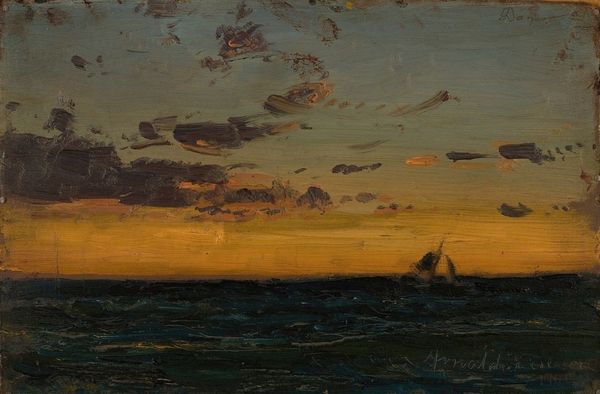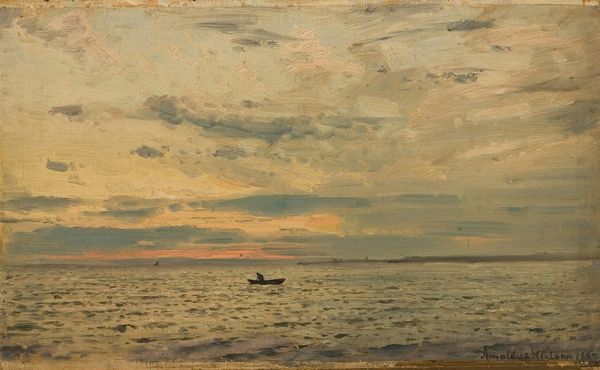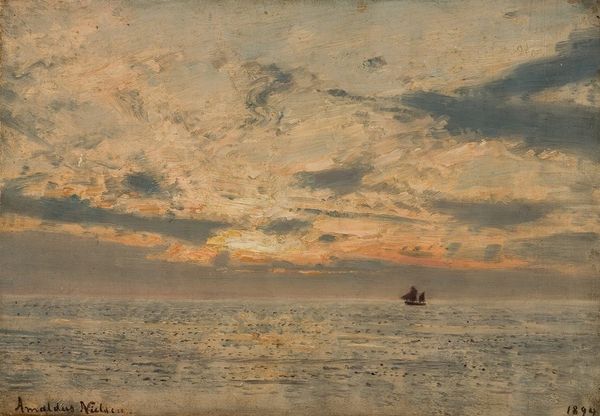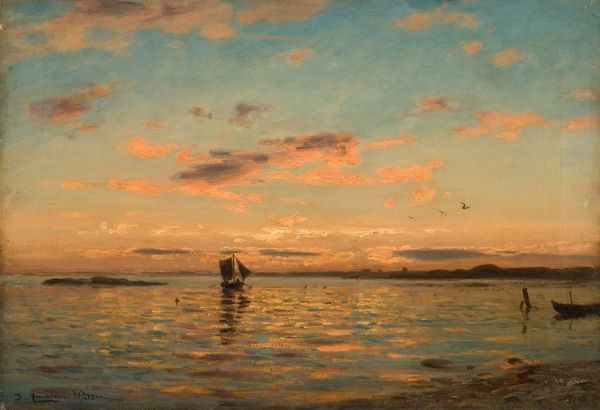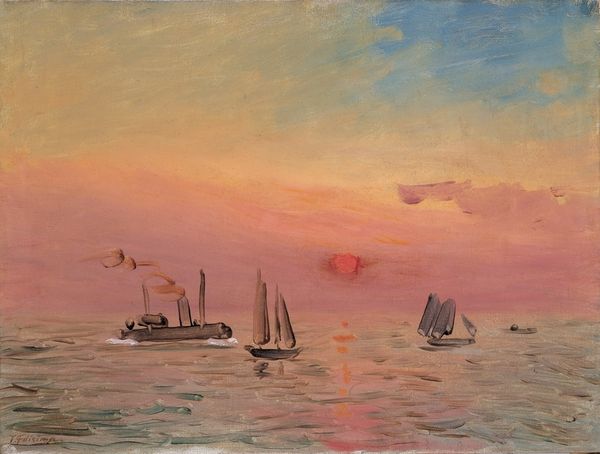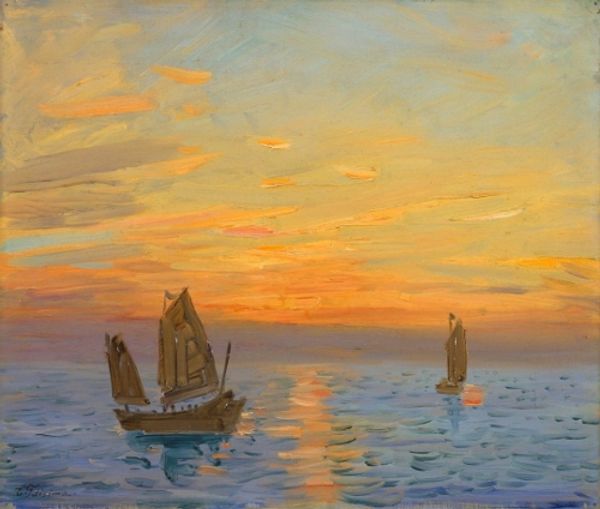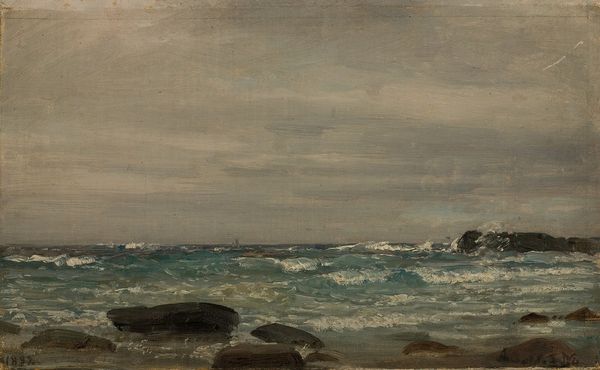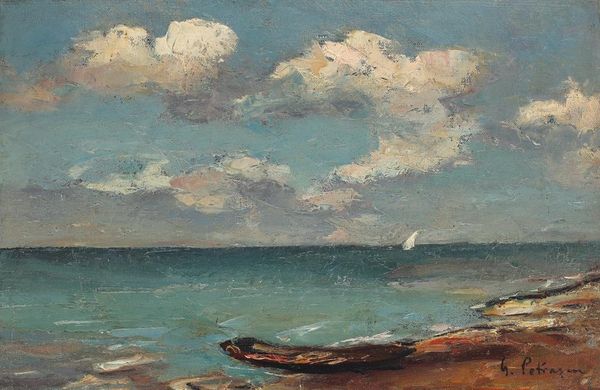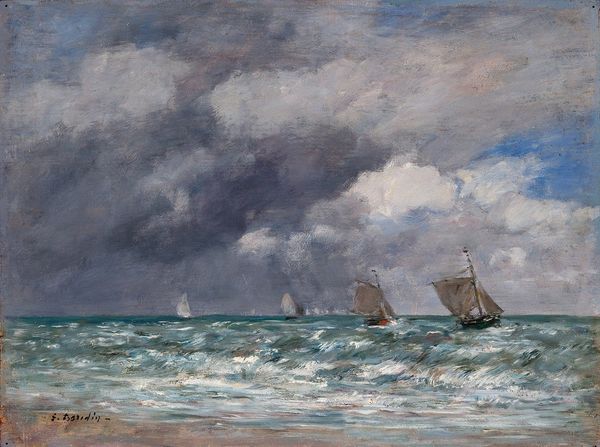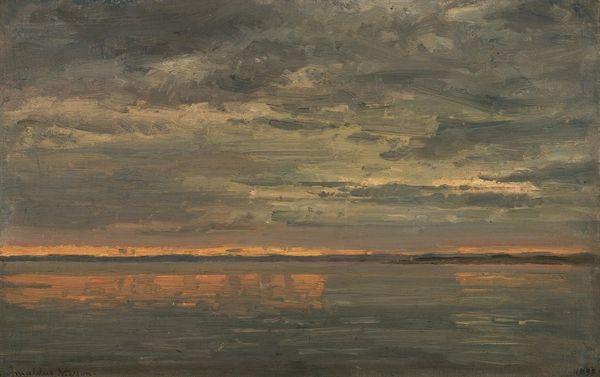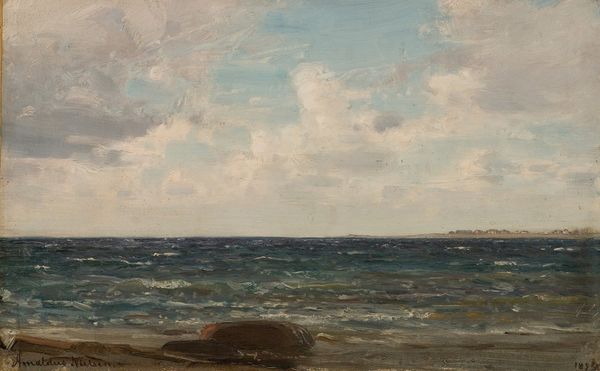
Copyright: Public Domain: Artvee
Curator: Looking at this painting, "Skisse" by Amaldus Nielsen from 1894, I am immediately struck by its dreamlike quality. The soft hues and gentle brushstrokes create an atmosphere of serene contemplation. Editor: It does possess an arresting stillness, yet something about it feels unsettling. There’s a certain melancholic beauty—almost like witnessing a world on the verge of transformation, especially considering the historical context around Scandinavian art during that period and the shifts in representation happening elsewhere. Curator: Precisely. This oil-on-canvas work offers us an insight into Nielsen’s fascination with capturing the transient effects of light and atmosphere. Painted en plein air, the fleeting moment becomes the focus. The rise of Impressionism with its focus on individual artistic vision brought a revolution of landscape art. The impressionists focused on visual sensation to paint open-air landscapes and cityscapes with broken color and rapid brushwork. It's remarkable how the painting captures the interplay between the sea, the sky, and the vessels navigating through this watery realm. Editor: But there's more to unpack here than mere optical perception. Think about these fishing boats rendered so small against such an expansive horizon. It begs questions of power dynamics—humankind navigating the whims of nature. Where are these fishermen coming from and where are they going? Also, with the painting entitled "Skisse" or "Sketch", this leaves the interpretation wide open. How might notions of class or colonial history play a role in their story, or the larger history and relationship to that time and place? Curator: Those are vital perspectives to consider. While Nielsen was known for depicting the Norwegian coastline, often emphasizing its untouched natural beauty, it's true that landscape art can also serve ideological purposes. By framing nature in a particular way, artists reinforce certain values and narratives tied to nationalism, for instance. It’s good to consider alternative meanings, to question the seeming purity of a landscape tradition. Editor: Exactly. Even in its perceived stillness and subtle shades, art reflects—and actively participates—in larger social and political currents. Viewing art from a position of continuous critique reminds us to ask questions rather than consume passively. Curator: That's a compelling point, and one that shifts my initial reading slightly. It shows how an artwork, seemingly simple, holds a universe of interpretations that are impacted by where we’re standing when we look at it. Editor: Yes, "Skisse" can invite conversations that allow us to think critically about both history and our present.
Comments
No comments
Be the first to comment and join the conversation on the ultimate creative platform.
